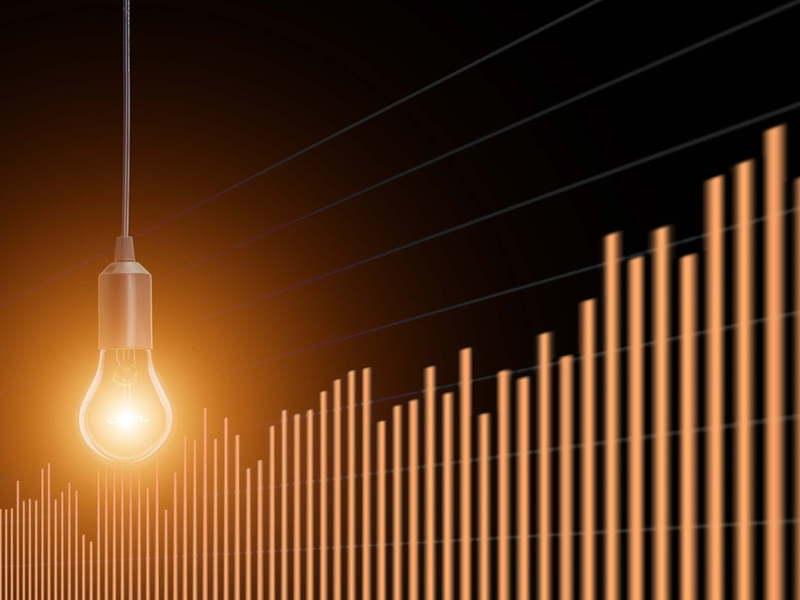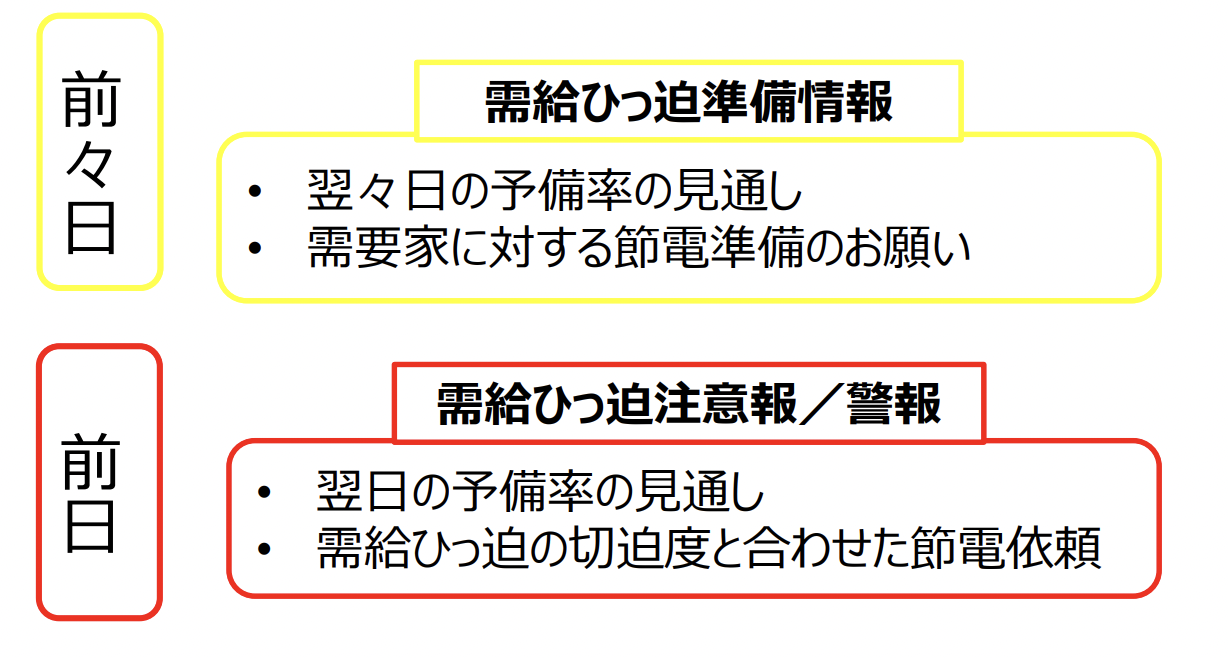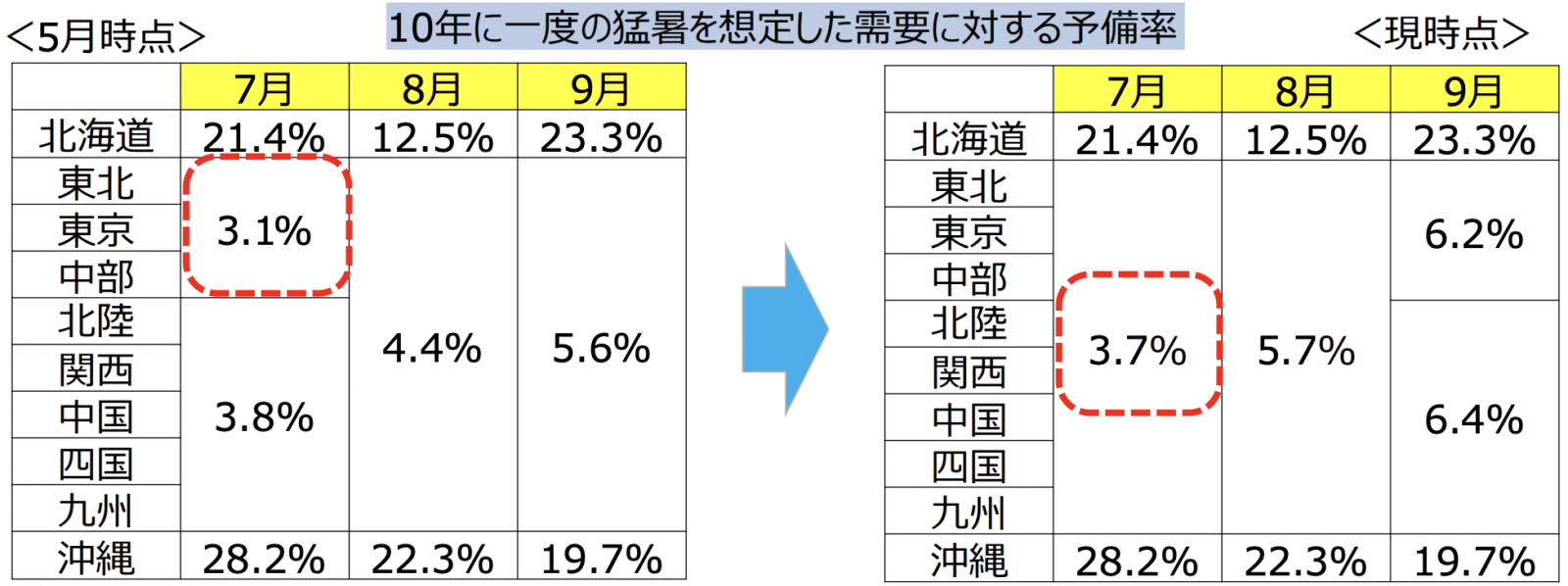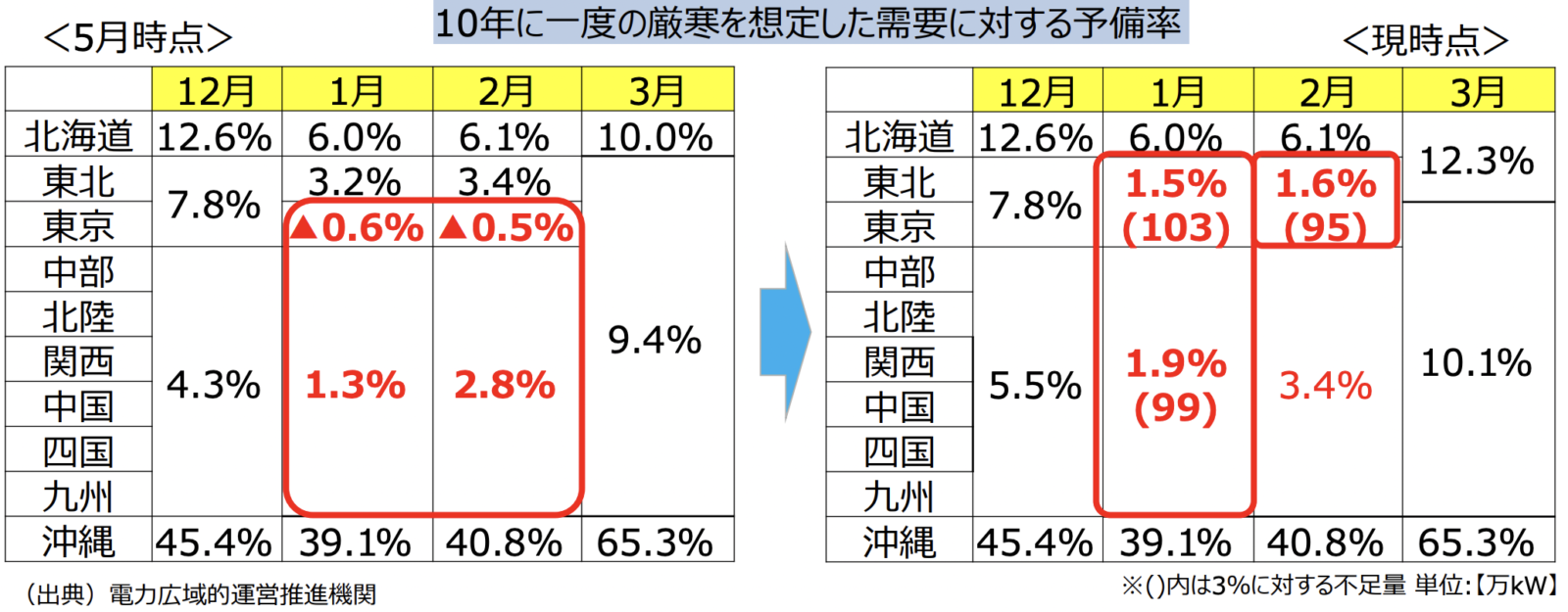What is the difference between a tight demand/supply warning/warning and readiness information? Latest supply and demand forecast for this summer and this winter

It is still fresh in our minds that in June of this year, the government issued its first “warning of tight supply and demand” due to tight demand for electricity, mainly in the service area of Tokyo Electric Power Company. Once again, we will explain the difference between tight demand/supply advisories/warnings and preparedness information, explain the timing of issuing the warnings, and introduce the latest outlook for power supply and demand this summer and winter.
Issue warnings/warnings according to reserve margin
Preparatory information remains a warning
The purpose of issuing tight demand/supply warnings/alerts is to widely publicize the possibility of a tight power supply and demand situation in advance. Therefore, when the wide-area reserve margin, which indicates the ratio of expected demand to supply capacity, falls below a certain value, a tight demand/supply warning/warning is issued.
Specifically, if the wide-area reserve margin is expected to be between 3% and 5%, a tight supply-demand warning will be issued, and if it is less than 3%, a tight supply-demand warning will be issued.

(Difference in the timing of issuance of tight demand/supply preparation information and tight demand/supply warning/warning. Source: Ministry of Economy, Trade and Industry)
The Agency for Natural Resources and Energy issues a tight demand/supply advisory/warning around 16:00 on the day before the tight supply is expected. As shown in the above figure, at around 18:00 two days before, the general power transmission and distribution companies will issue "Preparation Information for Tight Supply and Demand" in advance to alert consumers.
In general, forecasts of electric power supply and demand are influenced by the latest weather forecasts and prospects for supply capacity. Therefore, it is said that the closer the day is, the more accurate the forecast will be, and the tight demand/supply advisory/warning will be issued the day before.

(Differences between information on preparations for a tight supply and demand warnings/warnings for a tight supply and demand. Source: Ministry of Economy, Trade and Industry)
As for actions required of consumers, at the stage of preparation information for tight supply and demand two days before, they are limited to requesting power saving preparations. On the other hand, in the previous day's tight demand/supply warning/warning, power saving is actually requested according to the degree of tightness.
Reserve margins for August and September remain tight
This winter looks even grim
This summer and this winter, it is expected that the supply and demand for electric power will be tight nationwide. According to the Ministry of Economy, Trade and Industry's forecast as of the end of June, the reserve margin for July to September this year for demand assuming a once-in-a-decade heat wave is as follows.

(Reserve margin for demand assuming a once-in-a-decade heat wave. Source: Ministry of Economy, Trade and Industry)
Although the reserve margin exceeds the 3% required for stable supply in all areas, it is still expected to remain low in the eight areas from Tohoku to Kyushu.
In addition, the outlook for electricity supply and demand in the winter from December 2022 to March 2023 is even more severe, as shown in the chart below. In particular, the reserve margin is expected to fall below 3% in several areas in January and February next year, and further measures are required.

(Reserve rate for demand assuming severe cold once in 10 years. Source: Ministry of Economy, Trade and Industry)
In response to these prospects, the Ministry of Economy, Trade and Industry has taken measures from both the demand and supply side of electricity. On the supply side, we are conducting public offerings to gather additional supply capacity, and on the demand side, we are focusing on promoting power saving and energy conservation.
Furthermore, as a measure to structurally prevent a tight supply and demand, the company plans to implement measures to promote new investment in decarbonized power sources.






